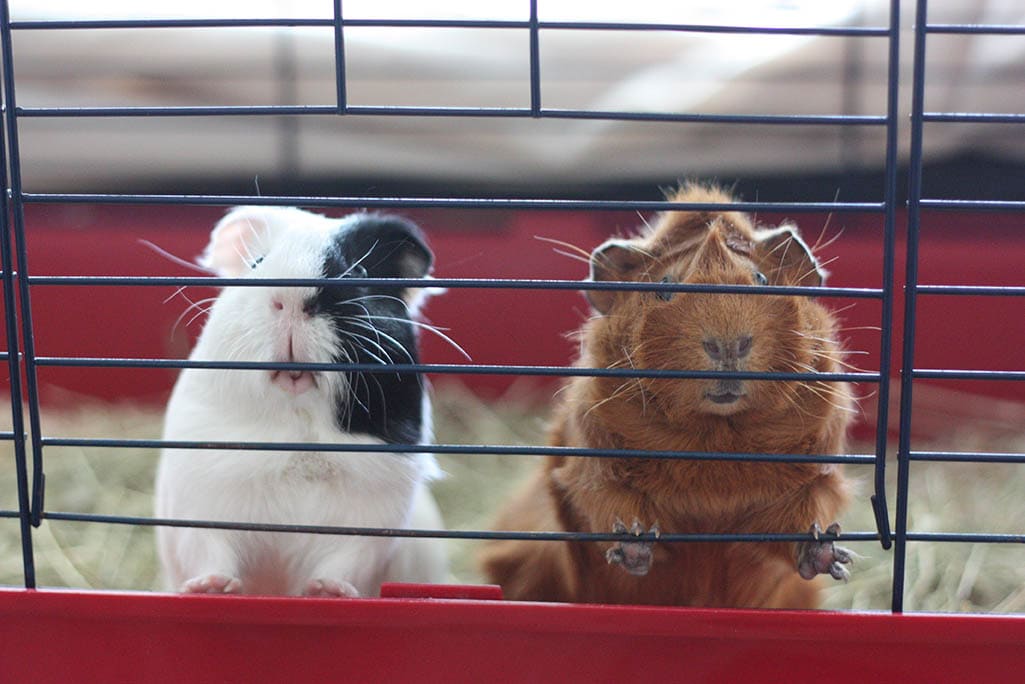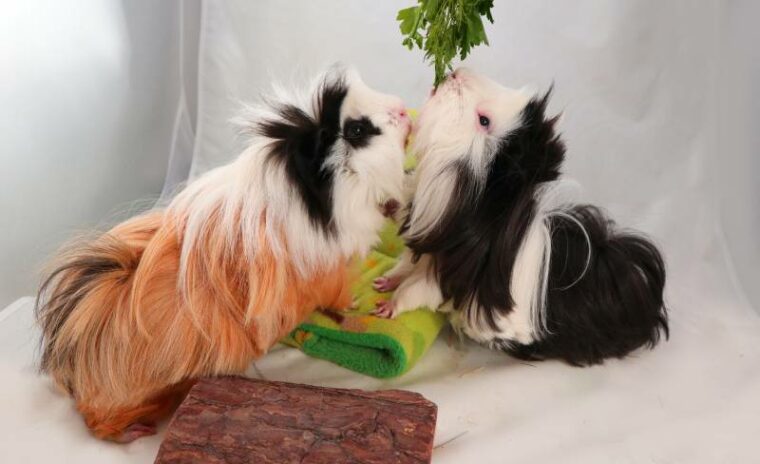
Click to Skip Ahead
Stopping a guinea pig fight is crucial for all your piggies’ safety. However, guinea pigs can look like they’re fighting when really they’re just playing. Playing includes chasing, humping, purring, and sharing toys and food.
On the other hand, fighting includes circling each other, yawning, baring teeth, and forceful physical contact that draws blood or pulls fur. Sometimes playing embodies fighting behaviors, though it’s time to intervene when blood is drawn.
In this article, you’ll learn the reasons your guinea pigs are fighting and the steps to stop it.
The 4 Reasons Your Guinea Pigs Are Fighting
Dominance and pack leadership is one of the primary reasons animals fight. Social animals, such as monkeys, wolves, lions, and chickens, among other species, create a hierarchy much like guinea pigs.
Hierarchies are essential among many social mammals because it shows the capability to lead their pack for survival. Also, the dominant male suggests better offspring and shows they are the strongest among the group.
Once a leader has been chosen, there may be other reasons for fighting, especially in guinea pigs. Other reasons include:
1. Pain Or Illness
Just as we can get cranky when we are in pain or sick, guinea pigs are much the same. Illness can stem from an unclean or unstable environment, dental problems, lack of appropriate nutrients, and stress.
If you notice any of the following signs, your guinea pig is likely sick and must see a vet at your earliest convenience.
To prevent any sickness contributing to pain or other causes, ensure your guinea’s home is well suited for them, provide fresh vegetables, fruit, and hay daily, and spend loads of quality time with them.
2. Constant Reintroduction
Upon first introducing your guinea pigs, they’ll create a dominance dance. Rumbling, teeth chattering, circling each other, and mounting are just some examples. However, after they create the hierarchy and choose a leader, they are ready to move in together. This can take a few days or up to a couple of months, depending on the personalities of each guinea pig.
If you introduce your guinea pigs, separate them, then reintroduce and separate them again, your guinea pigs will try establishing a hierarchy each time you reintroduce them. It’s crucial to understand the guinea pig way to prevent constant reintroduction. Otherwise, bonds may be broken, and fights will break out—sometimes beyond repair.
After a hierarchy has been established, keep your guinea pigs together.
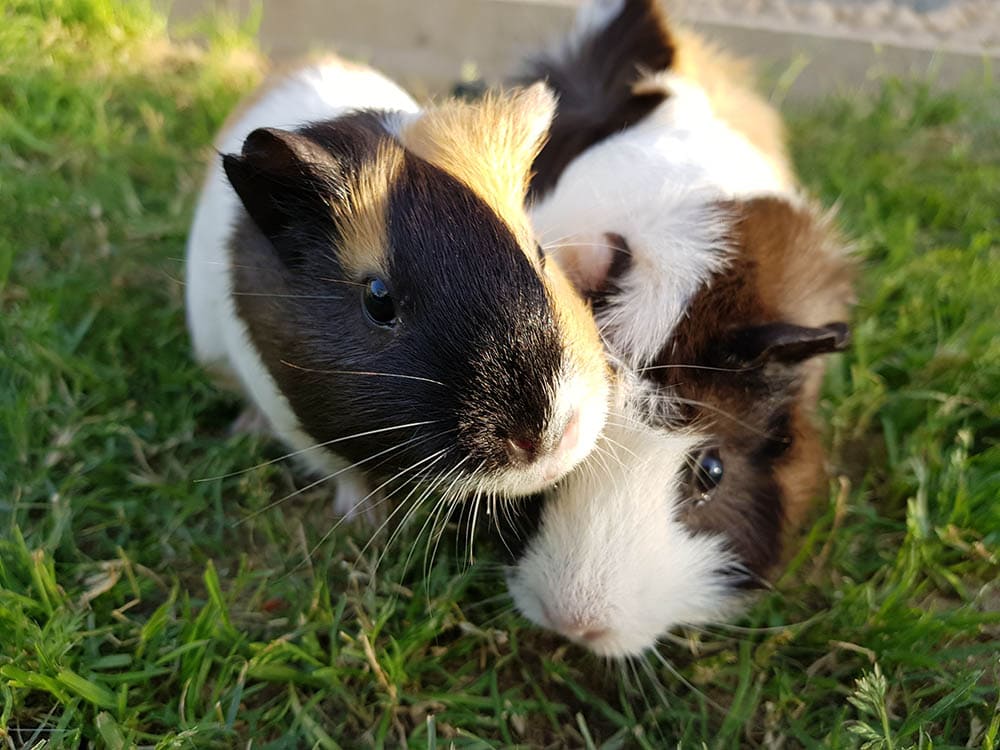
3. Not Enough Space
An adequate amount of space for one guinea pig is approximately 5.7 square feet. If you’re adding more guinea pigs, you must add about 3 square feet to the space. If this is not possible, investing in a guinea pig pen or customizable outdoor cage is essential.
Guinea pigs run around, hide, and have their own area for hierarchy reasons. If your guinea pigs feel cramped, fights may break out.
Guinea pigs like their downtime, but they also claim certain items. A territorial fight may break out if one guinea pig gets too close to your leader’s claimed items. Ensure you have one item per guinea pig in your cage.
4. Boredom
It’s easy to become bored if there’s no hay, fresh vegetables, appropriate chews, or tunnels to run through. The only thing to do is play with each other. Though, playing can lead to fighting if one guinea pig wants to be left alone.
Ensure your guinea pigs have sufficient toys, chews, tunnels, food, and activities to prevent boredom. A tired guinea pig is much safer than a bored guinea.
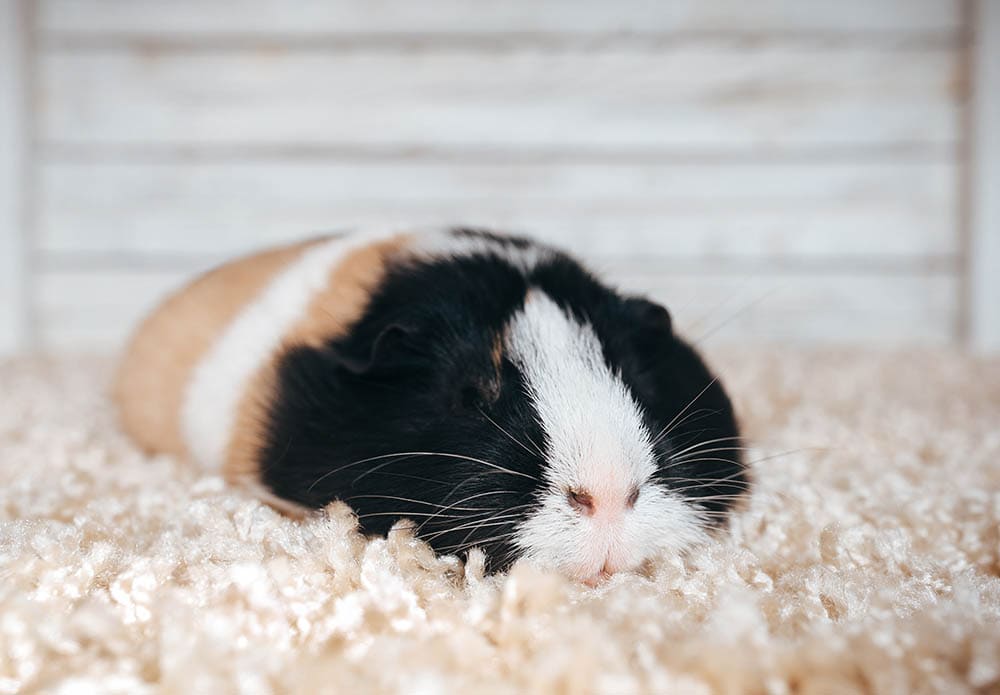
How to Stop Guinea Pigs From Fighting
During a fight, guinea pigs become stubborn, combative, and quite aggressive towards each other and whoever gets in their way. Although it’s best to keep guinea pigs together to avoid re-establishing dominance, sometimes separation is the only option.
Luckily, there are clear signs before a fight breaks out that you can watch. It’s important to understand what to do in the case of a guinea pig fight. Below are steps to take for everyone’s safety.
1. Understand Guinea Behavior
Thus far, you’ve learned the signs and triggers of what causes guinea pig fighting, though it can be difficult to calculate whether they’re playing or about to fight.
The difference between play fighting and actual fighting are:
Regardless of if your guinea pigs are fighting or playing, it’s best to keep an eye on them when they are chasing or making grunting and rumbling sounds. Often, a play fight can turn sideways.
2. Make a Loud Noise
If your guinea pigs are fighting, you’ll first want to clap or whistle loudly. Often, a loud noise can jinx your guineas out of their aggressive state. However, if the fight continues, you need to step in. If the fight stops, checking their environment is a good idea. Ensure they have enough space, an adequate supply of nutrition, their hides are set up appropriately, etc.
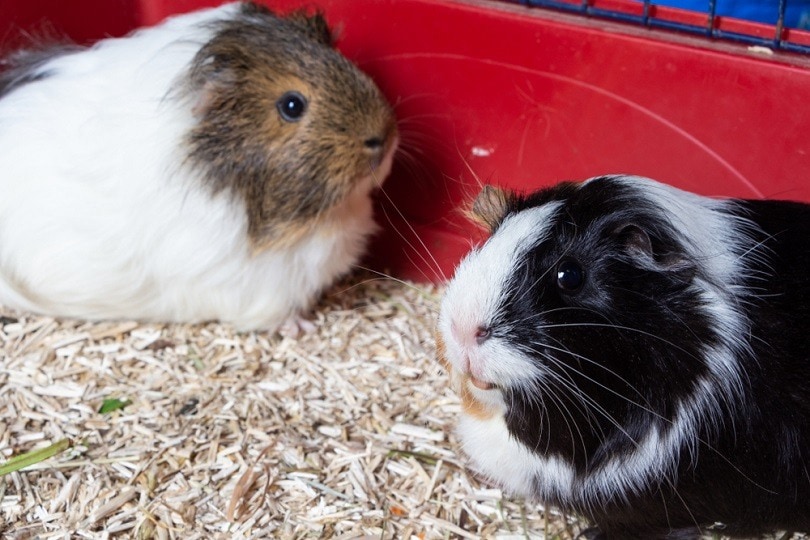
3. Provide Distractions
It’s vital to keep guinea pigs together and use separation as a last resort. If you haven’t already, it’s best to get your guinea pigs a cage that has a divider. You can put the aggressor on one side so the guineas can still see each other.
Supply a good amount of chew toys and interactive toys for distraction. You must provide food, water, and hides on both sides of the cage. Once your guinea pigs have calmed down, you can open the divider and allow them to roam freely again.
If your guinea pigs start another fight, it may be a good idea to bring them outside in another pen where there is a change in scenery.
4. Separate Your Guinea Pigs
By the third effort of keeping your guinea pigs together, you can separate your guinea pigs. Remember, this is a last resort after previous steps have been taken.
Place a towel on the aggressor and wear protective clothing before picking it up. Remove the guinea pigs so they don’t see or smell each other. Once guinea pigs are separated, create a mental checklist for the different culprits of why they might be fighting.
5. Check for Injuries
Speaking of injuries, after your guinea pigs have calmed down, it’s a good time to check for injuries or signs of illness. Guinea pigs are good at hiding their illnesses, so quarantining for a couple of hours and checking their behavior will help you understand if they are sick.
Ensure they are well hydrated, have a steady supply of vitamin C, and there aren’t physical signs involving illnesses, such as watery eyes or drooling.
6. Set Up a Neutral Space for Reintroduction
Before reintroduction, you’ll need to create a neutral space with no scents from either guinea pig and an adequate supply of hides, food, and water. You can reintroduce the aggressors if all your guineas are healthy and calm.
While your guinea pigs are getting reacquainted, clean their original home and set up their previous environment again. Also, keep a close watch on your guinea pigs. You’ll have to repeat the last two steps if another fight breaks out.
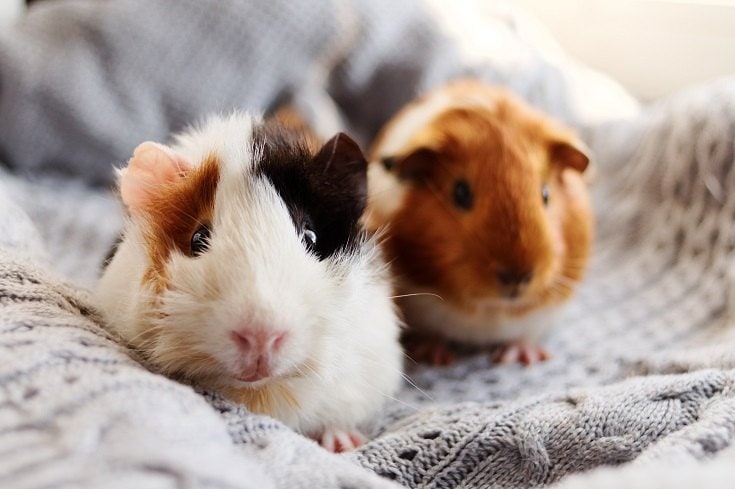
7. Place Them Back Home
If everything is good, and your guinea pigs have re-established dominance and pack leadership, you can comfortably put them in their home. Although, you’ll need to keep an eye on them for the rest of the day.
Final Words
To prevent fighting, your guinea pigs must be compatible, and each piggie has its needs met. This means each guinea pig must have their own hides, enough space, sufficient food, and an unlimited water supply.
It is a guinea pig’s wild instinct to create a hierarchy which means finding and submitting to a leader. If this is not set, multiple fights can break out. The best way to establish a hierarchy is to introduce new guineas to the oldest and only separate as a last resort.
Featured Image Credit: Tamara Makhun, Shutterstock




